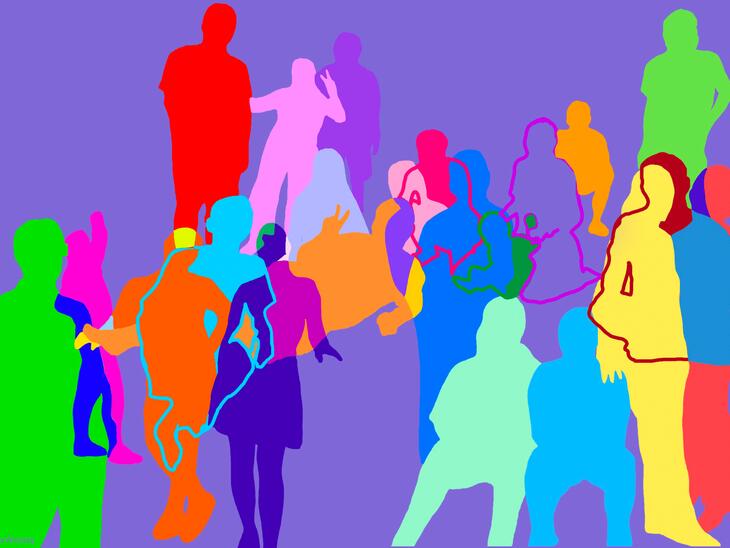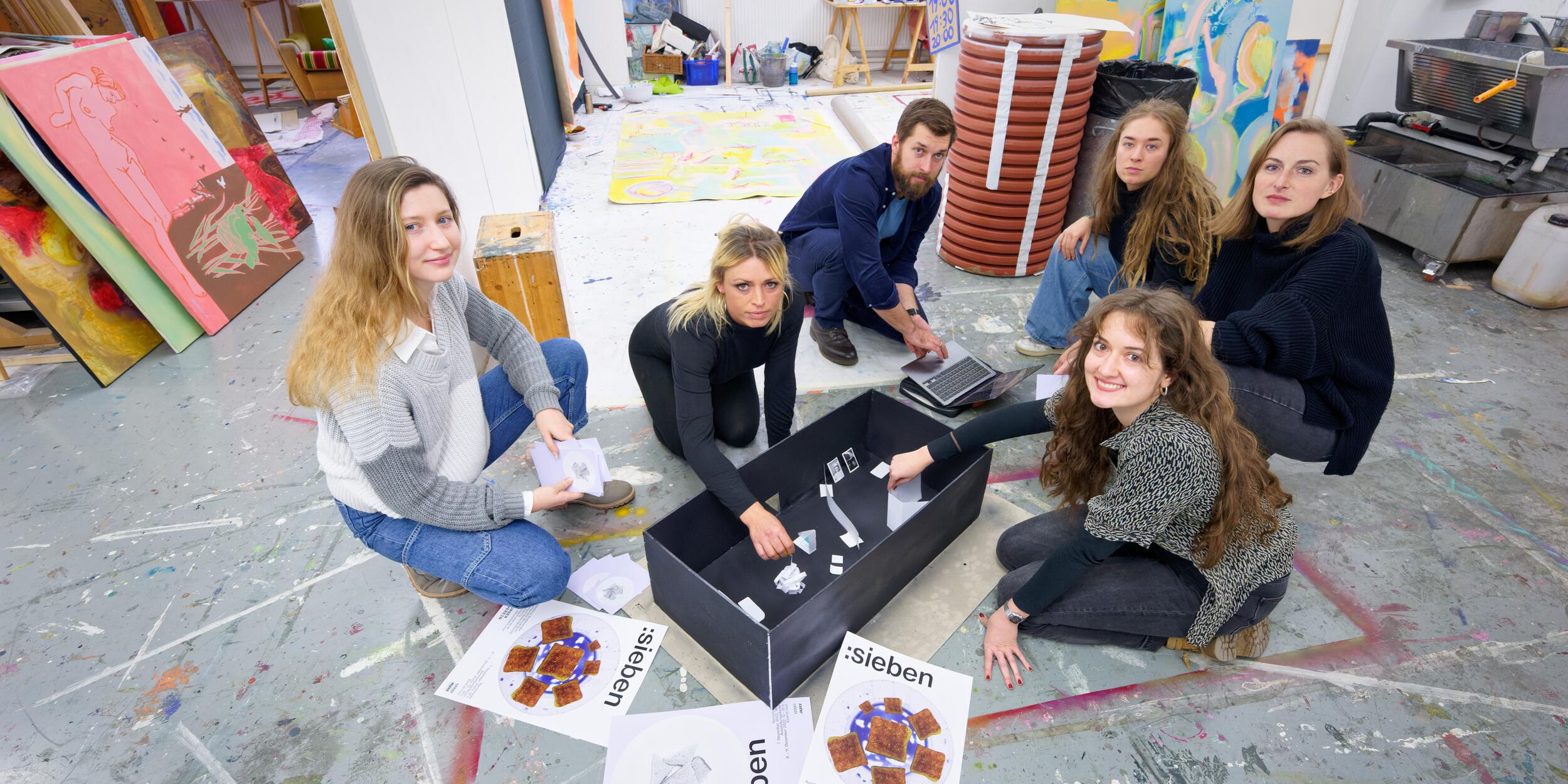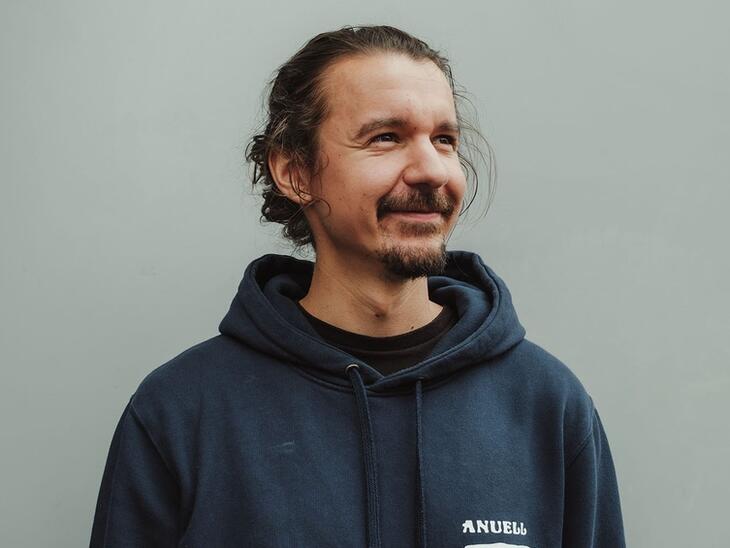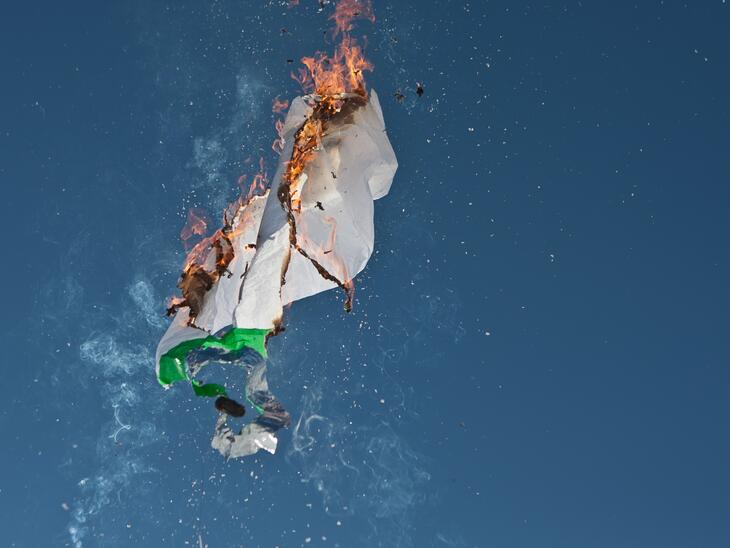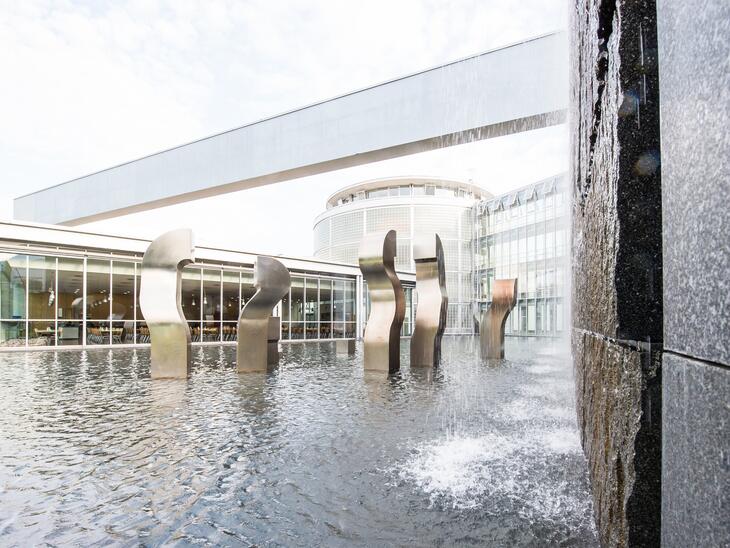You are already in the final phase of your studies in visual education (teaching degree) at the Mozarteum University. What does it mean for you to exhibit at the Salzburg Kunstverein?
The cooperation between the Mozarteum University and the Salzburg Kunstverein has existed for a very long time and is definitely something special that distinguishes the location of Fine Arts Education in Salzburg. It is by no means a matter of course for a student to be able to exhibit 200 square meters at an art association. Especially since internationally very successful artists are also represented here. Of course, we are very grateful for this and learn a great deal - about ourselves, about our artistic positions, the process of exhibiting and everything that goes with it. In addition, we are a motley crew from different disciplines and discourse spaces, who were proposed by their respective professors for the exhibition at the Kunstverein, and who first had to get to know and arrange ourselves. And that we don't get any ECTS points for it. This means that we implement the project on top of our studies and work.
How do you start planning a joint exhibition on 200 square meters?
Pragmatically, we started with the title, because we wanted to make a poster for which we needed facts. Naturally, this was accompanied by the question of whether we wanted to do something together or an exhibition of seven individual artistic positions. This eventually gave rise to the title ":seven" because the shared space, the distribution, was in a sense the lowest common denominator. However, the principle of sharing is not only immanent to the project spatially, but in general. We share the entire process with each other, our joint decisions, material as well as cognitive resources and know-how. And even though it often requires personal compromises and can be quite demanding interpersonally, you have many more opportunities in a group than you do solo. If only because other people bring different skills to the table than you do. In our case, we have expertise in photography and new media, drawing and graphics, painting and sculpture, as well as individual personal strengths - one is better at organizing, the other is more comfortable communicating. In addition, we do not exhibit anything that only one person out of seven thinks is good. In other words, the works are always viewed from at least six other angles, with the filters and correctives of the others.
This external feedback allows one to reflect anew on one's own work. Each and every individual can thus be a little more certain that the work will "resonate" with the audience. This collaborative, almost collective approach also distinguishes our university from other art universities - we experience this again and again in conversations with colleagues. Mostly, elsewhere there are simply the artistic classes in which one has to assert oneself in one's discipline. With us, it is always the case that we talk to each other about our work. This is probably also due to the pedagogical part of our studies. The fact that pedagogy and one's own artistic practice are valued to the same extent means that one can shape one's own personality wonderfully here.
Will the project also help you in your later work as educators?
The joint conception and organization of this exhibition will definitely help us to give future students a feeling for what is possible - that art education can be more than "just" art education. In general, we are taught a comprehensive skillset in our studies, which can be used in many different ways and with which everyone can pave his or her own personal path. Through the many conceptual works, it expands on the one hand the own imagination and imagination, and on the other hand, through the direct implementation of ideas in the workshops and studios, through the conception of exhibitions, one also develops an idea of which thoughts can actually be realized with which means. In the context of the exhibition at the Kunstverein, one's own work suddenly stands alongside 1,000 other things.
Ultimately, both in my studies and now at the Kunstverein, it's also very much about finding one's way creatively in both private and professional contexts and being able to react to certain situations and improvise. In our case, we have of course developed a precise idea in models of how we are going to implement our plan in the Great Hall, but perhaps that won't work at all in practice - and then we will have to think of something else ad hoc. Just with the means and ways of thinking that are available to us and in the one and a half days that we have for the on-site set-up. (laughter)
The Mozarteum University is one of the leading training centers for artistic teaching in Austria. How do you feel about the current discussion about combating the shortage of teachers and shortening the bachelor's degree to three years?
We certainly don't want to take the liberty of speaking for the entire student body. The subject that unites us is visual education, for which the duration and intensity seem to us to be extremely important. Until you become a professional, it is an enormous learning process with pedagogy on the one hand and art practice on the other, plus mediation. This also includes developing pedagogical, artistic and political attitudes, especially since teachers have a very, very important task, namely to educate our children. In this respect, we would be happy if there were less talk about shortening the duration of studies and more about the importance of teachers. It would make much more sense to us to consolidate the status of teacher training and to put it in the right light. In any case, the discussion about shortening the duration of studies does not improve the reputation of teaching studies in society, but makes it worse. Irrespective of the fact that the quality of education would suffer as a result. After all, if there is a shortage of doctors, we wouldn't even think of cutting back on medical studies. Educators are system maintainers, they shape and form the society of tomorrow - that should be worth something to us. In fact, it would help to make the curriculum easier. For example, that it is structured in such a way that an internship during the course of studies is actually feasible. And to make sure that universities train teachers who are happy to be entrusted with their own children.
:seven
Vernissage: December 7, 2022, 6:00 p.m.
Exhibition: December 8-11, 2022
Opening Hours: Tue-Sun from 12.00-19.00
Salzburger Kunstverein, Großer Saal
Hellbrunner Straße 3
5020 Salzburg
With works by Alba Malika Belhadj Merzoug, Kevin Klinger, Linda Kudla, Elena Lengauer, Valerie Luise Magnus, Eva-Maria Schitter and Lea Daniela Wiednig
(First published in Uni-Nachrichten / Salzburger Nachrichten on December 3, 2022)
